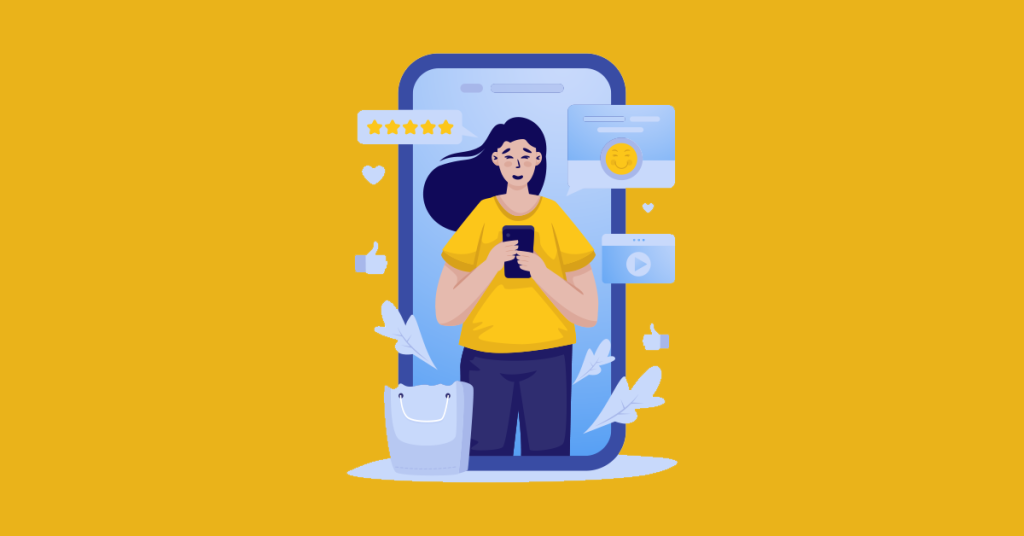Learn efficient methods for a better social media customer experience. Figure out how you can use social media to draw in crowds and make noteworthy changes.
Social media is important in determining and driving business expansion and customer experiences. Businesses have admitted to unrivalled prospects on social media to cooperate with consumers, provide individualized experiences, and gather information.
Businesses can modify their relations with clients to meet discrete needs by utilizing progressive customer data and analytics, which will help increase loyalty and customer satisfaction. Additionally, the nature of social media communication makes it probable for industries to receive and respond in real time, enabling them to advance their plans and products continuously.

Useful Ways Businesses Can Adapt For Personalization
Here are some useful ways businesses can adapt for personalization; let’s discuss them thoroughly.
1. Figuring Out Your Audience
Prerna Jain, Owner of Mould Cleaning Canberra says, “One of the most efficient ways found nowadays is to be thoughtful of your target audience. For this purpose, you need demographic data like age, location, gender, and interests. Businesses can use social media tools to analyze their followers and prevailing client data. Criticism and overview structures can likewise give significant data about consumer predispositions and demands. By making nitty-gritty buyer personas, businesses can fit their virtual entertainment activities to meet the specific requirements of their crowd.
These cover-ups comprise not only demographic info but also psychographic features like values, lifestyle, and areas of uneasiness. Businesses can select suitable social media stands and be involved more efficiently when they understand their audiences. You must frequently update and review profiles and audiences to keep the plan active.
2. Making Use of Customer Data
Client information is a goldmine for refining web-based client involvement and personalization. Businesses can use this information to learn about engagement patterns, customer preferences, and behavior, said Martin Heaton, CEO of Reinforcement Products Online. Utilizing devices like virtual entertainment examination, CRM frameworks, and following treats, organizations can assemble information on how customers cooperate with their web-based entertainment stations.
The audience can be divided up using this data, permitting more precise operations to be launched. Additionally, proactive commitment is made conceivable by the client data’s aptitude to classify designs and predict future conduct. Using data to modify offers, content, and connections to discrete client favorites is one way to attain personalization. Preference should be stated to data security and privacy to defend that client info is held ethically and in settlement with instructions.
3.Creation of Personalized Content
To get the consideration of your audience, you must make personalized content. Sam Hodgson, Head of Editorial at ISA.co.uk suggested that by using data analysis, businesses can classify which type of content matches their target audience. For illustration, millennials may favor brief, visually appealing content such as infographics and videos, while older demographics may find instructional articles and guides more attractive.
The style of the message is also customized to cater to the preferences of the market audience. Businesses have the aptitude to mechanize customization through lively content cohort tools, which provide tailored content to users. Concentrating on tailored contented businesses can increase connections and engagement and enhance general user involvement online.
4. Posts That Engage and Are Interactive
For a dynamic presence in social media, it’s vital to create posts that truthfully involve your viewers, said Sasha Quail, Business Development Manager of claims.co.uk. By incorporating elements such as polls, quizzes, contests, and live videos, you can foster a sense of community. Encourage users to participate actively. In addition, sparking discussions and inviting comments through thought-provoking questions can significantly boost levels. Increase visibility. Including user-generated content like client testimonials, reviews, and photos can further enhance credibility and trustworthiness. 
Don’t forget to include calls to action that prompt users to share, comment, or take action to maximize the impact of your engaging posts. Images, GIFs, and videos can attract attention and call for interaction. However, responses to comments and messages in time show that the brand appreciates its audience and is committed to two-way communication. Businesses make sure that there is a more interactive atmosphere on social media that calls for ongoing discussions and a dedicated community when the posts are more interactive and engaging.![]()
5. 24/7/365 Customer Service
Businesses today must offer their customers immediate and ongoing support in the digital fast lane, according to Ozzy Akpek, CEO of Smile Art Design. Offering 24/7/365 customer service on social media is a must because that is the only way to keep customers satisfied and loyalty ratings high. Many customers can reside in different time zones or have queries during holidays. This form of availability ensures round-the-clock problem resolution without causing frustration. This can be automated by implementing a combination of live customer service agents and automated chatbots.
Chatbots respond to common questions, freeing human agents to deal with tougher issues. By monitoring social media channels, companies can address customer grievances and feedback in real time and publicly, thus demonstrating a commitment to customer service. Aside from resolving particular issues, this type of real-time engagement helps develop a positive brand image. Such investment can help keep a competitive advantage over other businesses since their customers would now be offered social media customer service 24/7.
6. User-Generated Content
Adam Crossling, Marketing & New Business Director at zenzero says, “Brands should make the most of the UGC to uplift their presence on social media and get in touch with their audiences more organically. UGC is used for any form of content, be it pictures or videos, reviews, or testimonials, which are developed by the customers instead of the brand. This type of content is more vulnerable to new customers as it is treated as more authentic and thus reliable. Activating customers to share their experiences with a brand across social media creates an active community and gets valuable social proof.”
For gaining UGC, brands, for instance, can run hashtag campaigns or run competitions or rewards for reviews and testimonials. Embedding UGC in actual social media channels represents real customer loyalty and creates a sense of belongingness in the community. Also, UGC will alleviate the pressure on a brand to create content relentlessly and tap into the creativity and loyalty of its customers. All in all, UGC spreads credibility, cultivates engagement, and establishes more solid relationships with customers.
7. Influencer Partnerships
“Influencer partnerships are one of the best techniques by which brands can scale their reach and credibility on social media. Powerhouses have already built trust and rapport with their audiences, making their recommendations extremely powerful. In the case of influencers who cater to like markets or closely related markets, getting together can create a synergy that is valuable for everyone, including the brands with each partner. This may contain co-promotion, jointly-organized events content string, or other joint development” says, Ben Flynn, Marketing Manager at 88Vape.
Brands collaborate with influencers to gain new audiences, establish brand awareness, recruit activated audiences, generate content, and build a brand image through trusted voices. When implementing influencer campaigns, there should always be an aspect of authenticity and relevance. This can be achieved by selecting appropriate influencers whose audience best embodies the brand- or multiple influencers whose audiences reflect each of their various brands. Measurable engagement rates reach, and conversion, among others, make it possible to analyze such partnerships to optimize further strategies. However, the popularity of products has been known to end as soon as an influencer posts about them. Finally, while leveraging social media, influencer partnerships expand brand messages, improve engagements, and create a sense of community on many social media listening tools. 
 8. Personal Social Media
8. Personal Social Media
Businesses have to connect with audiences meaningfully, which is the reason that, increasingly, more social media experiences are personalized. Personalization customizes content, ads, and even interactions based on user preference, behavior, and demographics for every user. This strategy makes the customers feel valued and understood, which is a surefire recipe for increasing engagement, loyalty, or a combination of both. A business can accomplish personalization by using data analytics and machine learning to generate insights on customer preferences and behaviors, or a combination of both, said Andrei Vasilescu, CEO of DontPayFull.
Recommendations, advertising, and messages could be made in a way that heightens user experience. To this end, social media platforms make available tools such as segmented audiences and dynamic content to allow for targeting. The interactive features can also involve polls, quizzes, and individual video messages that entertain but engage users. Customized social media makes this content much more relevant, develops deeper connections, builds trust, and builds a brand’s relationship with its customers.
Final Thoughts Social Media Customer Experience
In the current, modern, and altered digital landscape, businesses need to engage customers in a far better and more personalized way through social media. Experts elaborate, “Businesses should develop AI-powered chatbots to start real-time engagement. Inform customer preferences through analytics of data and produce the content that suits a particular individual. Personalization makes the customer more willing and satisfied.”
Also, collecting feedback from customers through social media activities helps fine-tune products and services and ensures that they evolve with the changing needs of the customers. By continuously delivering personalized and connecting experiences, businesses can gain a differentiated edge in a competitive market, earn a loyal customer base, and fuel long-term success. This not only makes the customer happier, but these practices also spread the good word regarding the brand, thus eventually developing the brand.


